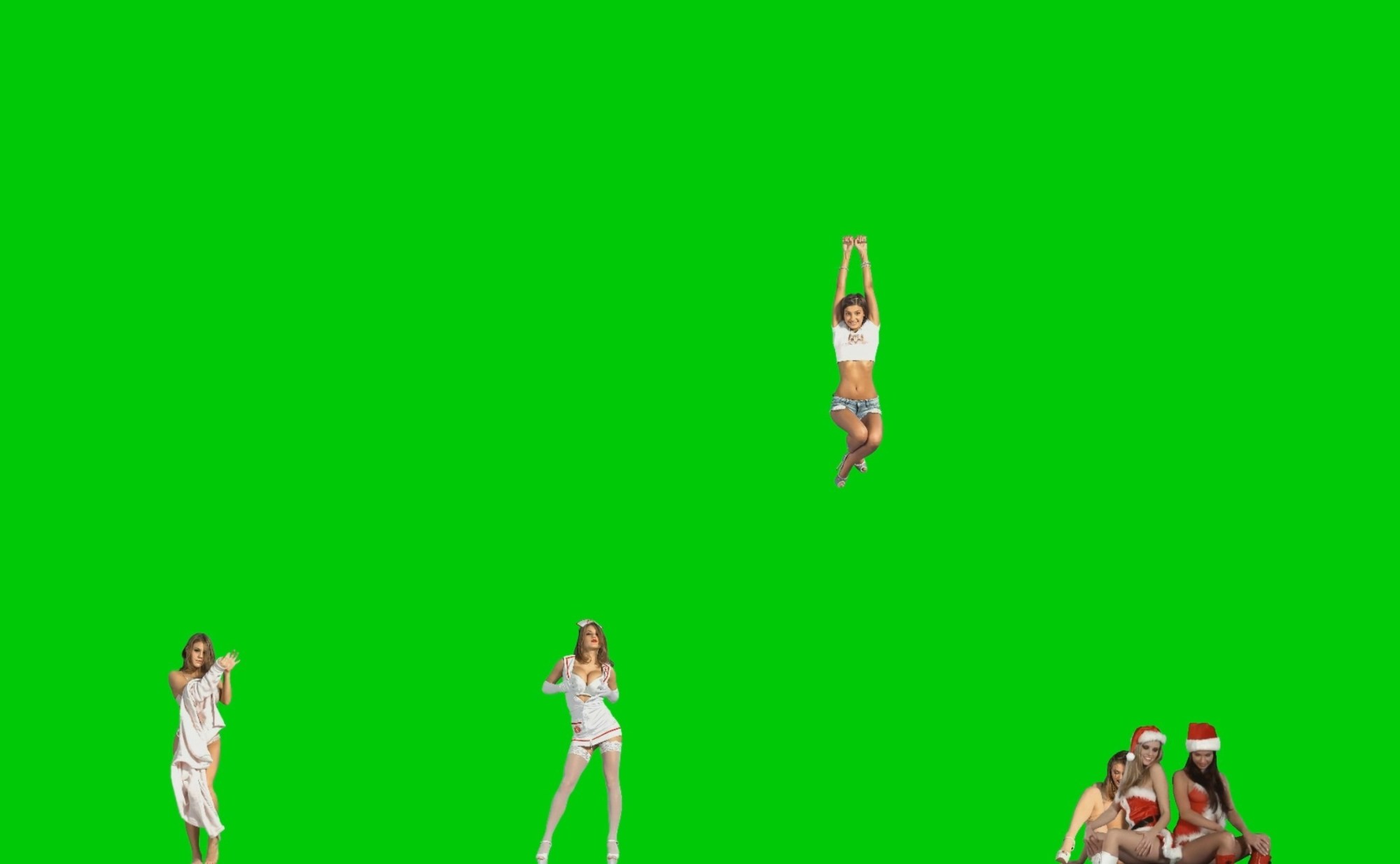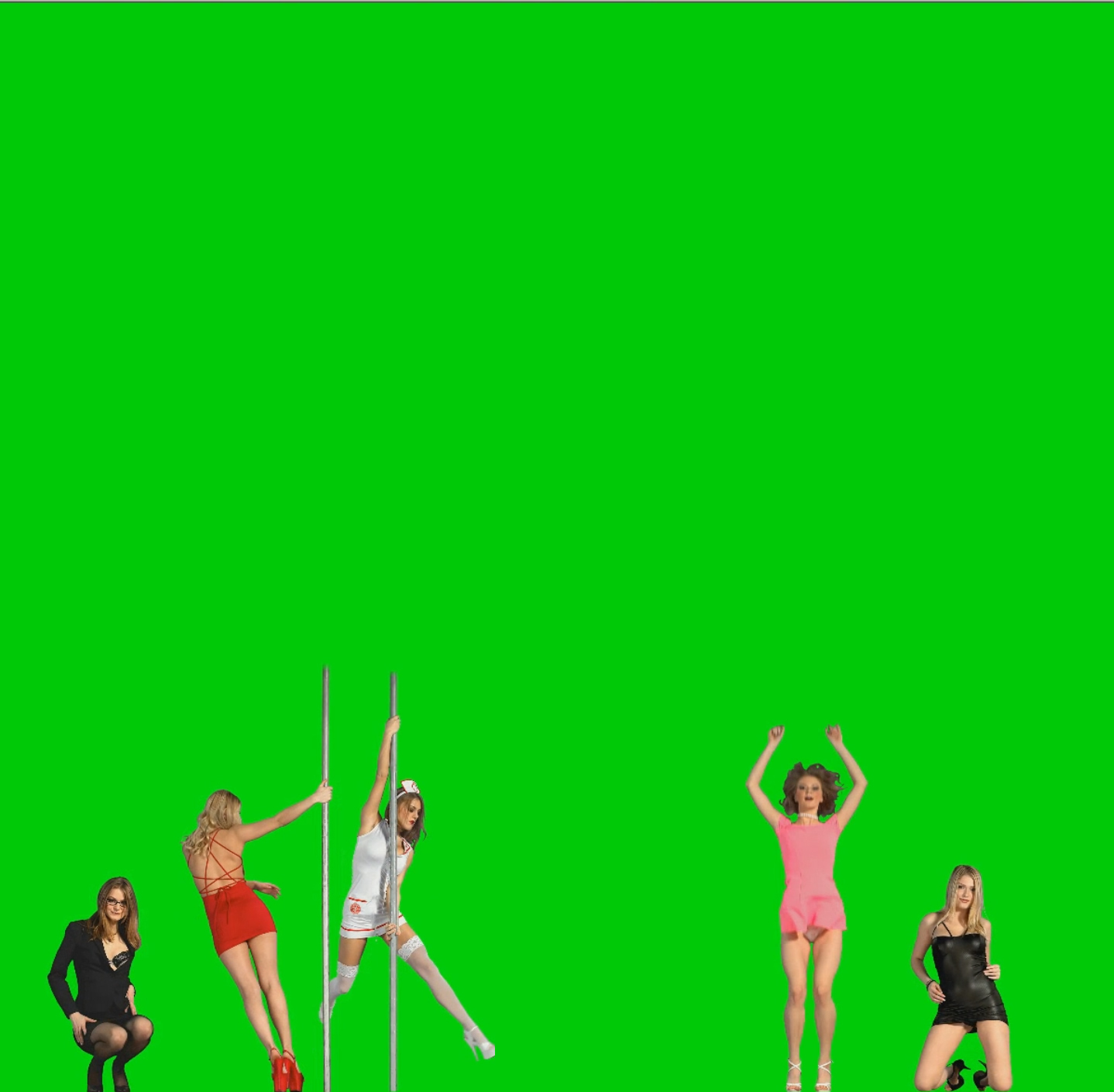Known for her playful webcam videos and intricate, richly layered digital videos and “paintings,” new generation Los Angeles artist Petra Cortright opens a group of new moving-image works at Depart Foundation today. “NIKI, LUCY, LOLA, VIOLA” features uncanny digital erotic dancers floating over a green screen and in lush, imaginary landscapes, Flash-drawn fireworks, bursting endlessly, and ponies in pink deserts. We catch up with the so-called “Internet artist” and frequent Stella McCartney collaborator to chat about the works in the new show.
You’ve used the “girls”— avatars of exotic dancers, including Niki, Lucy, Lola, and Viola, bought from online software—before, but these new works are so different.
The newer works are super-minimal, and I’ve been working with these girls for so long that it’s becoming more and more about them. They’re huge now—they’re projected at 150% [of life size]. There’s one soundtrack for all of the videos here; it’s super-ambient, kind of haunting: some giggles, echoes, whispers, light rain.
For the older landscape videos, I downloaded hundreds of different scenes, like dinosaurs, or a farm, and take elements from one and put them into another. In one of the new videos, I extracted elephants and placed them into this Western scene. They girls are designed to dance around on a [computer] desktop—you’re supposed to let it run while you’re working—but they’re so mesmerizing, I don’t know how anyone can get anything done with them on.
Do you make the costumes for the girls, too? How much of an identity did they have before you bought them?
You have hundreds of options for girls—they have the craziest categories: you can search by hair color or ethnicity or different costumes, like nurse or bunny or French maid.

Do they ever interact with each other?
They don’t, but sometimes I interact with them: there are points when they are picked up, which I’m doing with my mouse. I gently interact with them. The program allows for a maximum of ten girls onscreen at once, and then they all compete for your attention. I’m pretty desensitized to them, but I had to take the settings down three notches to make this.
Porn is such a huge part of the Internet, so it’s always at the back of my mind, like how can I not be interested in it somehow? Porn also pushes a lot of digital technology forward: it’s what gets file sizes down and pushes for better video quality and interesting streaming innovations.
Do you hand-draw any of this?
No, it’s more like collage. I love hunting around for stuff online. Geniuses programmed Photoshop, and it’s amazing that these tools are so readily available—I get so excited about that.
Did you teach yourself how to do it?
I took beginner’s Photoshop classes in high school, and I guess I’ve always had a really playful attitude toward technology. I’ve taken 3D modeling classes, and one assignment was to make a realistic-looking hand, and I found that really boring—I think I failed that class—so instead, I made animated gifs. It’s such a beautiful program: everything is neon and glowing. But I dropped out of two art schools; I don’t have a degree. I was such a brat! [laughs]
It seems like you’ve learned to manipulate a lot of this material through trial and error.
I’ve been doing this for the past ten years and constantly find stuff to play with. The Internet is such a huge part of my work because I like how passive it is. I always get a lot of anxiety around shows because it’s very in-your-face: this is my stuff, come see it. It’s so nice when you can make a piece and upload it quietly, and people who want to pass it around will pass it around. The Internet has made it pretty easy for me to do what I want in the way I want to do it.

That’s a nice way of thinking about it.
I also don’t have to watch people watching. Openings are much more direct, so it’s a bit of discomfort. But it’s so fun to be able to have the work grow to the size of a wall [for a projection]. I like making work that’s really flexible in terms of how big it can be displayed. I come from a digital place, so the physical work is born from this whole world.
Have you ever painted on canvas?
Both of my parents are artists. My mom has a Master’s in painting, and I asked for lessons ten years ago. I lasted about an hour. It was the slowest thing: you can’t copy and paste, you can’t undo. A big thing for me is Google images, and now, more so, Pinterest. I’ll scroll through Pinterest before a painting session, and sample a color I like, then be working with that color in ten seconds. Or I can save a texture. I make a lot of my own brushes in Photoshop and download a lot of found brushes. It’s so fast, it’s like painting on crack. I have so many collections; I think a lot of Internet artists are digital hoarders. I have folders and folders of saved images.
Your selfie webcam videos look like tumblr posts. They’re wholesome, with pizza slices and snowflakes, you’re singing along to pop songs. These new videos are engaging; the subjects make direct eye contact. They’re seductive, aware they have an audience.
Yeah, the webcam videos are much more intimate. I’m fascinated by the girls on a lot of different levels. I’m still trying to put my finger on exactly what I’m doing with them. I feel protective over them.
“NIKI, LUCY, LOLA, VIOLA” opens at Depart Foundation in Los Angeles on July 9.
Credits
Text Jennifer Piejko
Images Petra Cortright
